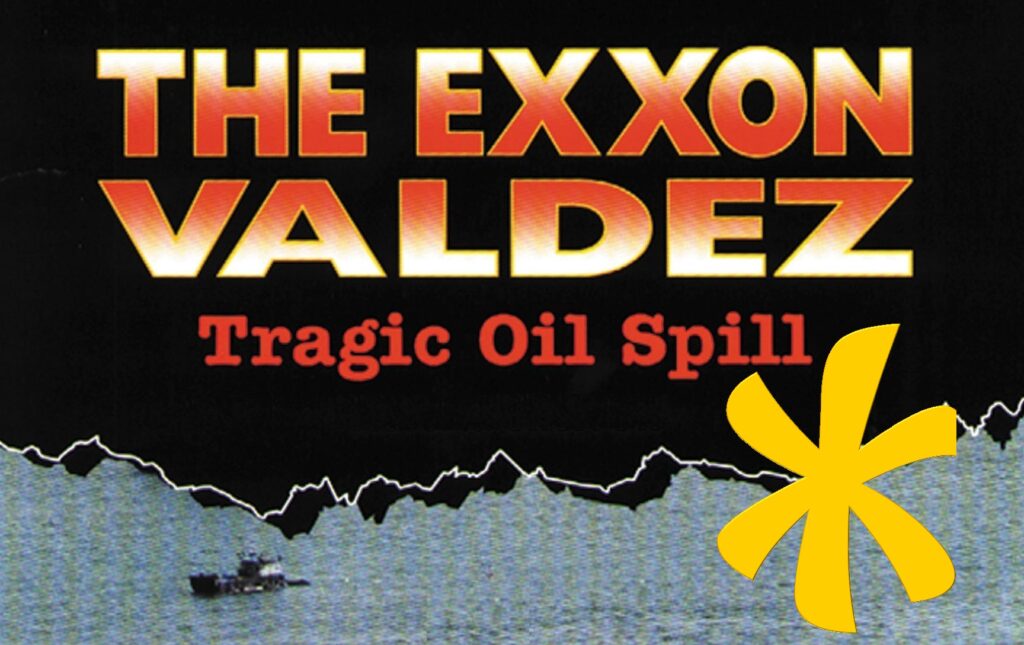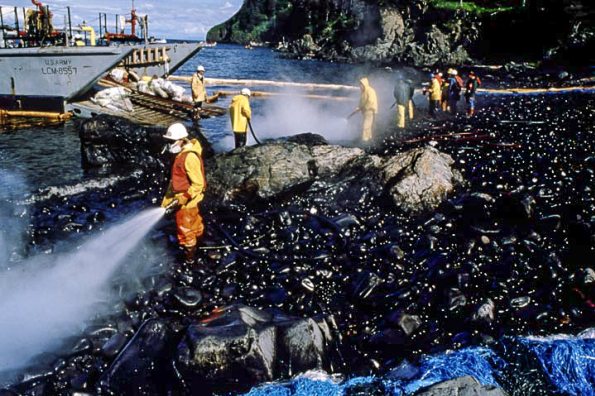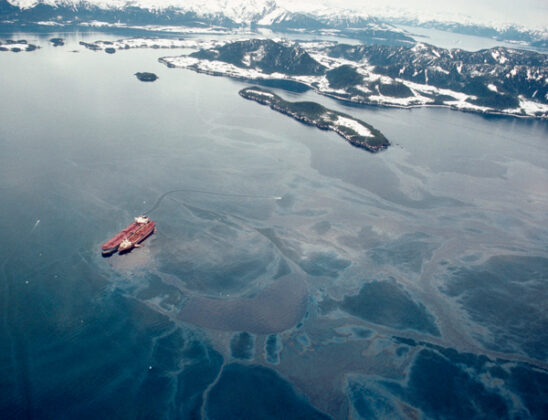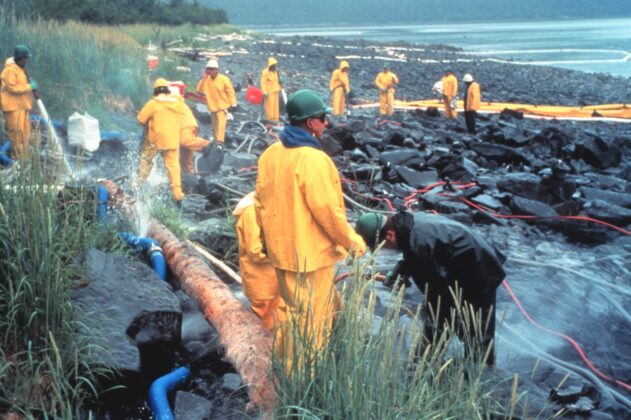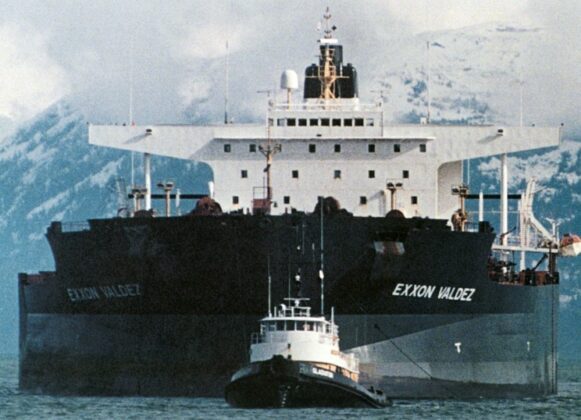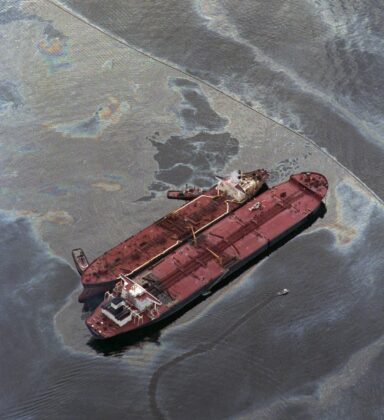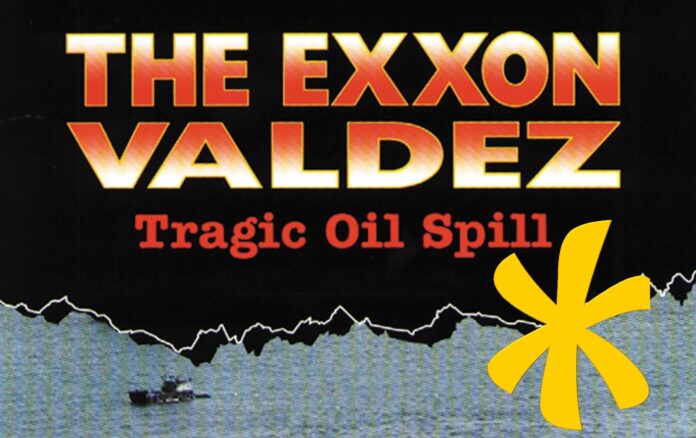
(www.MaritimeCyprus.com) On 24 March 1989, the single-hull tanker EXXON VALDEZ was departing the Port of Valdez, Alaska with a full load of North Slope crude oil (approximately 1.26 million barrels) destined for Long Beach when it grounded on Bligh Reef in Prince William Sound.
EXXON VALDEZ grounded on Bligh Reef in Prince William Sound, Alaska, on 24th March 1989, releasing ~37,000 tonnes of Alaska North Slope crude oil. Despite the utilisation of significant numbers of personnel, vessels, boom, skimmers and other resources, the oil spread widely to affect a variety of shores to varying degrees over an estimated 1800Km in Prince William Sound and along Alaska’s south coast as far west as Kodiak Island. The response was the most expensive ever for a ship-source oil spill, with over 10,000 workers employed at the height of the clean-up operations, many of them in shoreline clean-up, often in remote areas.
The resulting oil spill, while not the largest in US history, was clearly the most important and most expensive ship-source spill. It engendered much litigation.
Storyline:
One of the worst oil spills in U.S. territory begins when the supertanker Exxon Valdez, owned and operated by the Exxon Corporation, runs aground on a reef in Prince William Sound in southern Alaska. An estimated 1.26 million barrels (37,000 tonnes) of oil eventually spilled into the water. Attempts to contain the massive spill were unsuccessful, and wind and currents spread the oil more than 100 miles from its source, eventually polluting more than 700 miles of coastline. Hundreds of thousands of birds and animals were adversely affected by the environmental disaster.
It was later revealed that Joseph Hazelwood, the captain of the Valdez, was drinking at the time of the accident and allowed an uncertified officer to steer the massive vessel. In March 1990, Hazelwood was convicted of misdemeanor negligence, fined $50,000, and ordered to perform 1,000 hours of community service. In July 1992, an Alaska court overturned Hazelwood’s conviction, citing a federal statute that grants freedom from prosecution to those who report an oil spill.
Exxon spent ~US$2.1 billion in clean-up costs and pleaded guilty to violations of the Clean Water Act, the Refuse Act, and the Migratory Bird Treaty Act.
Exxon itself was condemned by the National Transportation Safety Board and in early 1991 agreed under pressure from environmental groups to pay a fine of $100 million and provide $1 billion over a 10-year period for the cost of the cleanup. However, later in the year, both Alaska and Exxon rejected the agreement, and in October 1991 the oil giant settled the matter by paying $25 million, less than 4 percent of the cleanup aid promised by Exxon earlier that year.
A civil action by the United States and the State of Alaska for environmental damage ended with payments of ~US$900 million toward restoring natural resources. A further US$303 million was paid in voluntary settlements to commercial fishermen for lost income due to fish stock damages, to Alaska Natives for lost harvest foods, to seafood processors and employees and to other organisations for lost income, as well as to private landowners for damage to their land as a result of the oil. With additional fines and damages ~US$4 billion was paid as a consequence of the spill. A part of this amount was recovered from various insurance companies, including from the vessel’s P&I Club under TOVALOP and from cargo owners through CRISTAL.
Following the grounding, Alaska Governor Jay Hammond authorised the creation of the Alaska Oil Spill Commission in 1989 to examine the causes of the spill and issue recommendations on potential policy changes. Fifty of these recommendations formed the basis for the Oil Pollution Act bill introduced into the legislative process in March 1989 by congressman Walter B. Jones, Sr. The bill was signed by President Bush on 18th August 1990, officially enacting the Oil Pollution Act of 1990 (OPA 90), which mandated double hulls for new tankers, response plans, and a number of other remedial measures. OPA 90 also significantly changed the liability and compensation scheme for oil spills in US waters. The amount of oil entering waters of the United States from ships drastically decreased following implementation of OPA 90.
Exxon Valdez short documentary from The New York Times:
Another interesting Exxon Valdez full documentary:
For more interesting maritime history click HERE





